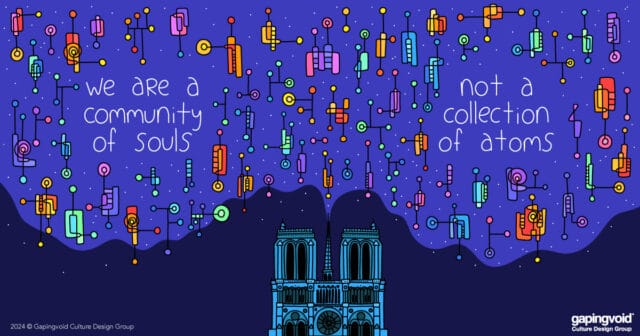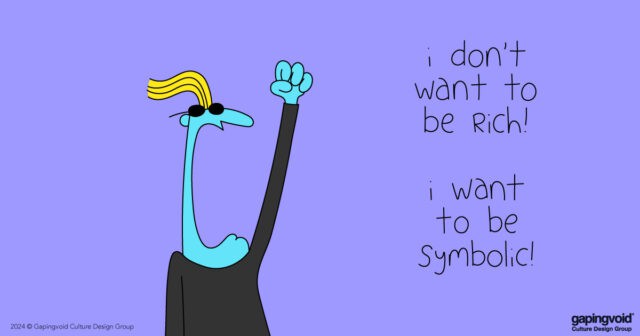What the heck, I know I mentioned this in passing earlier today, but I liked this one so much I thought it worthy of its own blog post.
The uber-intelligent Lee Byant from Headshift left a great comment in my “Cloud Bottlenecks & Humanification post:
Hi Hugh,
I agree that the twin challenges of de-commoditisation and humanisation are part of the key to companies like this developing the kind of new relationships we all want to see.
You have tried the blue monster thing, which is a kind of internal advertising campaign, to galvanise people inside large companies. I think we need to complement this with a number of other techniques to humanise the organisation and take internal brand engagement to a new level if we are to move forward.
I wrote a longish post about this recently based on a talk I gave at Reboot: http://www.headshift.com/blog/2008/07/free-the-battery-humans.php
Thats the slide deck from Lee’s talk above. What a fabulous opening image. I wish I had been there to hear him speak:
What these three dimensions have in common is their dependence upon the people inside the business. By elevating the individuals in the organisation above systems, and by re-balancing the relationship between people and process, we can create a social fabric that lives and breathes the values that large companies are trying to instill in their organisations. We have the tools and the ideas to do this in ways that were not possible before, and we are in a position to finally move beyond Taylorism and the factory model to a new era of genuinely people-powered organisations and networks. We know how to create rich and purposeful social networks as vehicles for collaboration and co-operation. We know how to aggregate ideas and negotiate common language to create better forms of information organisation and retrieval. We know a lot more about what is possible when people trust each other by default; and we also know a lot more about how to engage in debate and deliberation with people who agree with us and people who do not.
Yeah, I agree with Lee. Affecting real change inside a large company requires more than just a mad, blogging cartoonist ranting away from somewhere out in deepest, darkest West Texas.
The fact is, this stuff is REALLY hard. Even if the company WANTS to change. But that’s what makes it so damn interesting. Rock on.




